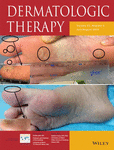Case series of post-purpuric darkness on the periorbital area after aesthetic surgery
Abstract
Periorbital hyperpigmentation (POH) is a common condition encountered in dermatology practice. POH is caused by various exogenous and endogenous factors including excessive pigmentation, postinflammatory hyperpigmentation (PIH) secondary to eczema, periorbital edema, excessive vascularity, and aging. Recently, we have experienced several patients who complained of POH with an unusual pattern. Their pigmented lesions had several features in common. The pigmentation occurred bilaterally after aesthetic surgery involving the periorbital region. Periorbital post-purpuric darkness should be distinguished from common POH. Practitioners should ask patients about history of prior aesthetic surgery and make their patients aware that the dark colors are composed of various pigments such as hemosiderin, which make treatment troublesome. Conservative management with expectations for gradual spontaneous regression or laser therapy with multiple wavelengths including 1,064-nm laser for PIH and 650 or 694-nm laser targeting heme-derived pigments may be considered as treatment options.
CONFLICT OF INTEREST
The authors declare that they have no conflict of interest.




